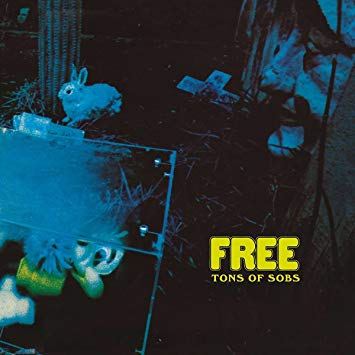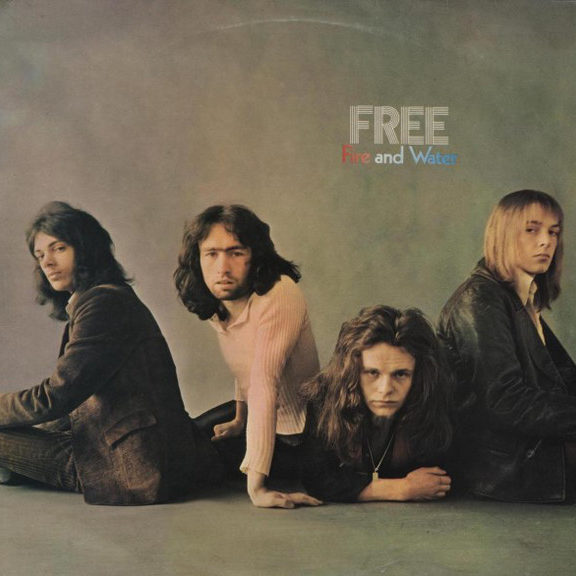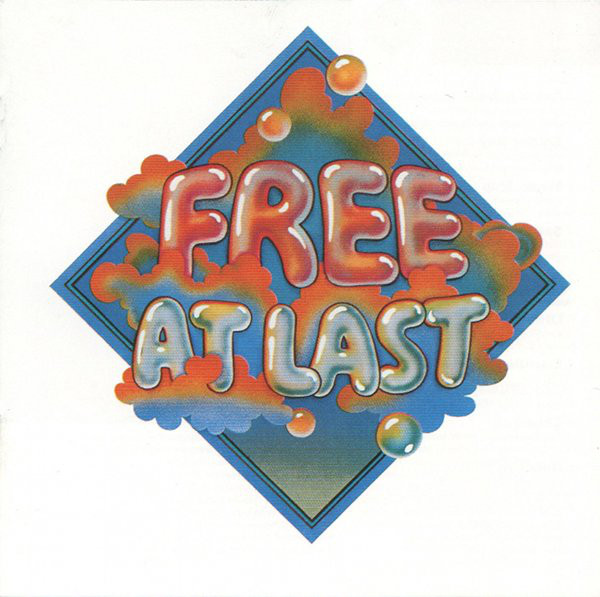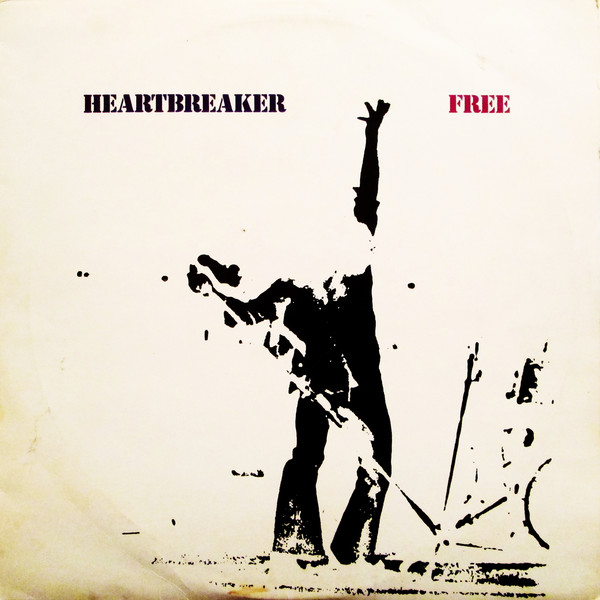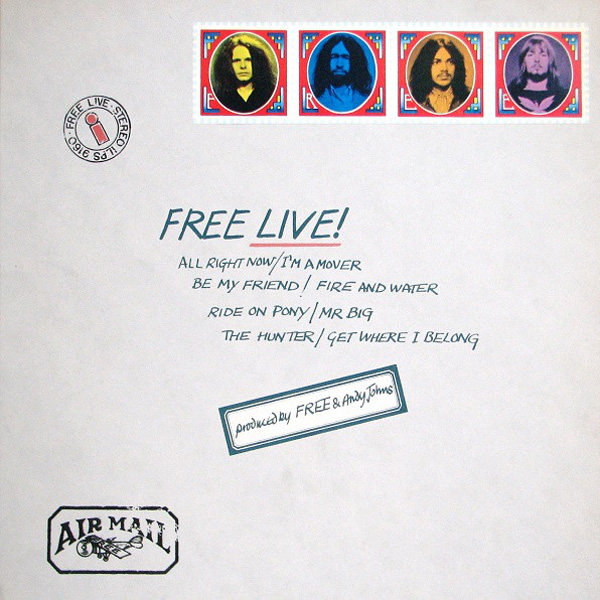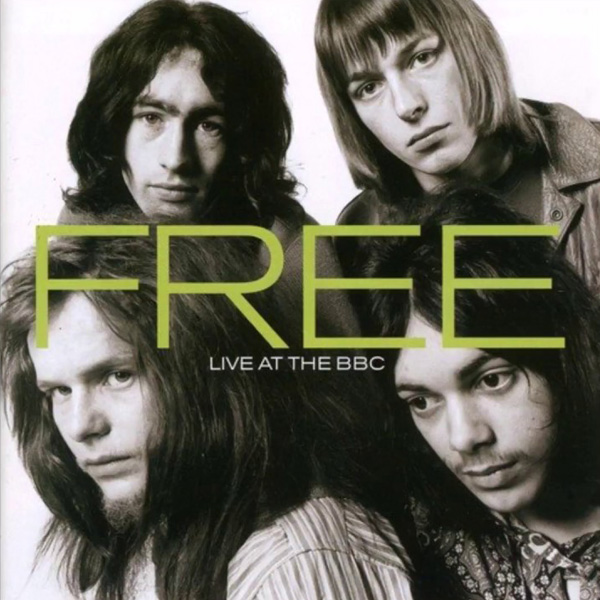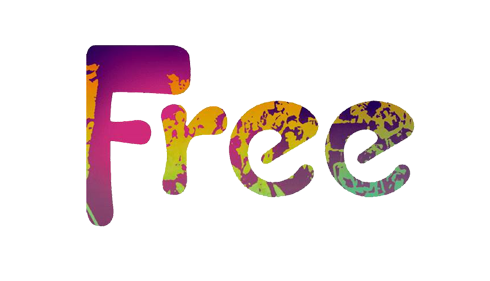Free
1969
Click for Lyrics
I'll Be Creepin
If you are tryin’ to screw me baby
Take my advice
Opportunity baby, never knocks twice
If you are tryin’ to fool me baby
Don’t play around
‘cos when I get to you baby
I wont make no sound
‘cos I’ll be creepin’
I’ll be creepin’ baby
I’ll hold you in my arms
Like nobody else
And when I know we’re apart
I wont take no less.
Take all you things and move far away
Take all your furs and rings baby
But don’t you sing hurray
You can change your address
But you wont get far
Don’t make no difference wherever you are
Yeah ‘cos I’ll be creepin’ baby
And I’ll be creeping ’round your door
I’ll hold you in my arms, like nobody else
And when I know we are apart, I wont take no less
I’ll hold you in my arms, like nobody else
And when I know we are apart, I wont take no less
Take all you things and move far away
Take all your diamond rings now baby
But don’t you sing hurray
You can change your address
But you wont get far
Don’t make no difference baby wherever you are
Yeah ‘cos I’ll be creepin’ ’round your door
Songwriters: PAUL RODGERS / ANDY FRASER
I’ll Be Creepin’ lyrics © Blue Mountain Music Ltd., BLUE MOUNTAIN MUSIC LTD
Songs of Yesterday
Sing me a sad song
And I’ll be right on my way
A sad song like the songs of yesterday
Well my father used to sing the blues
Sometimes it was good
But my mother never saw the use
And she chased him for his blood
A sad song like the songs of yesterday
A sad song
And I’ll be right on my way
Oh you know my father
Always used to say
A bad workman blames his tools
But it seems to me
A man who uses the tools
Is just a fool
Sad song
And I’ll be right on my way
Sad song
Like the songs of yesterday
Well now the streets are filled with silent cars
And all the world’s a stage
But I must get to work today
Today I get my wage
Sad song
Then I’ll get on
On my way
Just like a song of yesterday
Listen to what I’m gonna say
Lying in the Sunshine
I’m layin’ in the sunshine
Just outside my door
Dreamin’ of the work I should do
Just layin’ on the floor
Fences need repairing
And money to be earned
But I’d rather sit right here
And think about the world
So let me lie in the sun
Let me dream all alone
Let my worries fly away
I am happy here so let me stay
If you could only feel the same
Your world would be a peaceful place
So let us lie in the sun
Let us dream all alone
Let our worries fly away
So happy here
So let me stay
If you could only feel the same
Your world would be a peaceful place
Songwriters: Andy Fraser / Paul Bernard Rodgers / Paul Francis Kossoff / Simon Kirke
Lying In The Sunshine lyrics © Universal Music Publishing Group
Trouble on Double Time
I’ve been a bad bad boy
And I know I should be good
A bad boy
So long that it must be in my blood oh!
Oh! yeah
Oh! Oh
Let me tell you this
I’ve been feelin’ my way
Every chance I get
You know I love every woman
Every woman you can bet
Trouble on double time
You know my school teacher
Told me before I left school
That a man with two women’s
Not a man but a fool
Feelin’ my way
Every chance I get
You know I love every woman
Every woman you can bet
Trouble on double time
Feelin’ my way
Every chance I get
You know I love every woman
Every woman you can bet
Trouble on double time
It’s driving me out of my mind
Driving me out of my mind
Driving me out of my mind
Songwriters: Simon Kirke / Andy Fraser / Paul Rodgers / Paul Kossoff
Trouble On Double Time lyrics © Blue Mountain Music Ltd., BLUE MOUNTAIN MUSIC LTD
Mouthful of Grass
Instrumental.
Woman
Carry me away
I know your angel eye can see through me
Carry me away
Far away from the love you give so generously
So generously
Woman, oh oh
Listen
I got a burning heart
I need to tell you that it’s you I love
I got a burning heart
I need to tell you that I’ll never get enough
Never, never, never, never get enough, ooh babe
Woman, oh oh
Yeah, marry me today
I’ll give you all I own except my car
Marry me today, baby
I’ll give you everything but my guitar
But my guitar and my car
Woman, oh oh
Listen
Let me hold your tongue
For I know you’ll understand the way I feel
Baby, I know you’ll understand
That all I wanna do is take your hand
I don’t mean to do you no harm, baby
I just wanna be your man
Oh, I just wanna be your man, baby
Lord, I wanna be, I wanna be
Hey, woman, I’ll be your man
Woman, I’ll be your man, yeah
Songwriters: Christopher Mcfarlane / Neil Fraser
Woman lyrics © Nw Royalty Consulting, LLC
Free Me
Morning comes
And the evening follows
Life without you
Knows no tomorrow
You leave me weary
And you leave me tired
But you fill my soul
With strange desire
But I love you babe
Yes I love all of you
Ah! Ah! Ah!
Ah! Ah! Ah! Yeah.
Why don’t you feel me
I’ll watch your eyes
Gaze into space
Oh! let the sign of love
Go not on your face
You drain my strength
And you run me down
Mm.you got me crawlin’
Crawlin’ on the ground
Oh but I love you babe
Oh yeah I love love love you babe
Ah! Ah! Ah!
Ah! Ah! Ah! Yeah.
Why don’t you free me
Songwriters: Andy Fraser / Paul Bernard Rodgers
Free Me lyrics © Lupus Music Co. Ltd.
Broad Daylight
Broad daylight
Broad daylight
Broad daylight.
See the smoke fills my room
Curl and whisper in the gloom
Then I long for the day
When the sun comes out to say
Broad daylight
Broad daylight
Broad daylight
Broad daylight.
Now the clock says it’s time for bed
Time for sleep the moon just said
Time for tears in your dreams
Will the tears all disappear come
Broad daylight
Broad daylight
Broad daylight
Broad daylight
Broad daylight
Broad daylight
Broad daylight
Broad daylight
Let me feel the morning
When the sun is downing
Songwriters: Andy Fraser / Paul Rodgers
Broad Daylight lyrics © Blue Mountain Music Ltd., BLUE MOUNTAIN MUSIC LTD
Mourning Sad Morning
Sunday morning I rise
And I stand to face a new dawn
Sunday morning a new day is born
Such a long way to go
And so little time to get there
Such a long way to go
But I want you to remember
All the love we used to know
Think of me sometimes
My love
Morning morning, sad day
Ah, ah, ah, ah, ah, ah, ah
Morning morning, sad day
Ah, ah, ah, ah, ah, ah, ah
In the evening I sit
And my thoughts they turn to you
In the evening I think of my home
And I need you to remember
All the love we used to know
Think of me sometimes
My love
Morning morning, sad day
Ah, ah, ah, ah, ah, ah, ah
Morning morning, sad day
Ah, ah, ah, ah, ah, ah, ah
Mmmmmmmmmmmmmmmmmmmmmmmmm
Mmmmmmmmmmmmmmmmmmmmmmmmm
Mmmmmmmmmmmmmmmmm
Mmmmm
Songwriters: Andy Fraser / Paul Bernard Rodgers
Mourning Sad Morning lyrics © Kobalt Music Publishing Ltd.
Free is the second album by English rock group Free, recorded and released in 1969. The band had spent time touring after their debut album Tons of Sobs the previous year, and there is a marked difference in the musicianship of the band as well as Paul Rodgers‘s voice. Whereas Tons of Sobs had been produced by Guy Stevens, Free was produced by the head of Island Records, Chris Blackwell.
This album saw the burgeoning of the songwriting partnership between Paul Rodgers and bassist Andy Fraser, which had been glimpsed on Tons of Sobs with songs such as “I’m a Mover”; here, eight out of the nine tracks bear a Fraser/Rodgers credit. Possibly as a result of the sixteen-year-old Fraser’s influence as a songwriter the bass guitar is far more prominent here than on the previous album. The instrument is used as a rhythm guitar, driving the songs, while Kossoff’s lead guitar develops from it.
While Fraser and Rodgers made a strong writing partnership, tensions in the band increased. Kossoff, whose natural spontaneity had been given free rein up to then, particularly resented being taught very specific rhythm guitar parts by Fraser. However, Blackwell managed to keep the band in line to record the album.
The album performed poorly on release, reaching only No.22 in the UK charts, and failing completely in the US. The single releases, “Broad Daylight” and “I’ll be Creepin'”, also failed. Two songs from the album, “I’ll be Creepin'” and “Woman”, were later covered by the American rock band Three Dog Night.
The album is notable for having innovative artwork from Ron Rafaelli of The Visual Thing Inc. It is featured in the book 100 Best Album Covers alongside better-known examples such as Peter Blake‘s cover for the Beatles‘ Sgt. Pepper’s Lonely Hearts Club Band (1967) and Robert Crumb‘s artwork for Big Brother and the Holding Company‘s Cheap Thrills (1968). The book was part compiled by Storm Thorgerson who had designed many famous album covers such as Pink Floyd‘s The Dark Side of the Moon (1973).
Rafaelli made the cover by photographing his model with strobe lights to make a silhouette of her against a background, on which he could then overlay the design. Hence, the album has a design of a woman made of stars leaping across the sky. The band’s name is printed in extremely small letters at the top of the cover; with CDs being much smaller than LPs, this is almost unreadable.



